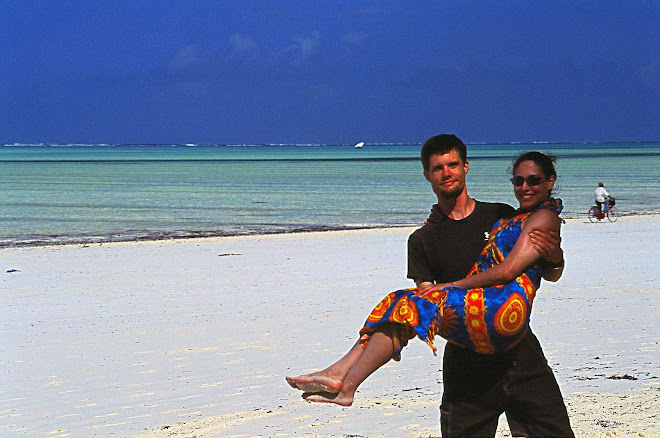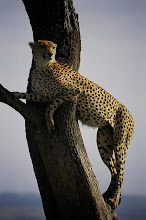
My father questioned our going to Potosi, Bolovia after seeing the satellite image using Google Earth. He said it’s in the middle of nowhere, without a shred of green, and has an altitude of 4100 m. Well, Dad’s right as always. This city is in the middle of nowhere and wasn’t built because of its lovely arboreal population. But I not only wanted to see the city that grew from nothing, I wanted to see its benefactor. In 1545, the city of Potosi was built virtually overnight. Over the next twenty years, its population exploded to 100,000 making it by far the largest city in the Americas. By the 17th century it was the largest city in the world at 160,000. It imported everything from basic food supplies and construction material to Persian rugs and Chinese porcelain. All roads led to Potosi. Opulence and decadence best described Potosi at this time with gambling houses, theaters, brothels, dancehalls, richly constructed civil works buildings, magnificent mansions, and dozens of splendid churches (to absolve all sins of course). But surely it didn’t grow from nothing, Potosi grew from Cerro Rico (Rich Mountain) the richest single source of silver in the world and from it Spain and Europe were propped up nearly singled handedly . . . but at a price. Over the three centuries of colonial mining it is estimated that 9 million indigenous and African slaves were consumed in the mine or died from related diseases. Many were forced to spend up to 4 months in the mine without pay as a mita (required service to the state started by the Incas and then abused by the Spanish). The boom bubble busted after 1650 and the city and the country declined dramatically. Potosi’s population fell to 30,000 by the time of independence in 1825. The town has recovered since then and enjoys an acceptable level of prosperity at 120,000 with a youthful vibe, but is still poor by most standards. After 500 years, minerals are still extracted from the mountains, but very little in the way of mining technology and safety standards have evolved. Little has changed with one exception … it’s open for tourism. This is why we’ve come. I’m here to play miner for a day and see just how back braking life is for these Bolivians. Our tour began at the miner’s market in town where each day the miners pick up their daily supplies including coca leaves, shovels, black-tobacco cigarettes, lamps (Chinese and American) and dynamite. The Cooperatives do not provide anything for the workers and keeping dynamite in ones home is a dangerous practice as miners are often drunk and a bit crazy. Speaking of crazy, for just $2 USD you can legally buy a fuse, a stick of dynamite, and sodium nitrate. There are three types to choose from, Bolivian (the best quality, por supuesto), Argentine, and Peru (the lowest). Our group bought cigarettes, coca leaves, soda (for the miners), and five kits of explosives. We suited up in miners gear including boots, pants, over coat, hard hat and lamp (the Chinese variety). Locals yelled, “Gringos Locos”, from a speeding van as we walked onto the street in our gear. We drove up the mountain and turned off about half way up onto a dirt road. The mountain is pitted with numerous holes and has small adobe villages at their entrances (the ‘natural’ bathrooms are everywhere, watch where you step). It is completely painted in tear streaks of red and yellows from the ferrous oxide and sulfur waste. Apparently, Cerro Rico had an elevation of 5165m in the 17th century but now has an elevation of 4830m due to centuries of mining. Before we entered the mine we were shown how to make a bomb. The dynamite was taken out of the package and rolled into a green ball like Playdough. They shoved in the fuse, put it into a plastic bag with a kilo of little white beads of sodium nitrate, tied the bag into a ball, lit the fuse, and handed it to us with an enormous grin. It’s just like in the cartoons, the fuse hisses, sputters, and smokes. As we passed the bomb around to have our photo taken the enormous grins changed to worry. The miners grabbed the bombs and ran to burry them. When the fuse finally triggered the dynamite and its tiny little white beads the explosion thundered. I could feel it my chest 200m away. Our guide, Pedro, spoke incredible English laced with dark humor with a keen knowledge of Western pop culture, all learned inside the mine. His father started bringing him into the mine when he was 10, he’s currently 25 (with teeth of a 70 year old), and his grandfather continues to work in the mine at age 68 (not sure of the state of his teeth). Pedro’s first language is Quechua (the language of the Inca). With a cheek full of coca leaves we followed him, nervously, inside the mine at an elevation of 4325m (that’s about 14,300 feet for you hard headed British Units people). Work is done by hand using basic tools since the Cooperatives took over from the government in the 1980s. Men work in groups of 15 to 20, 8 hours days, 6 days a week. There are a myriad of tunnels that bore down into the depths of the mountain looking for the precious minerals that run north to south along the Cordillera.
The mine we visited has 5 levels all connected by rails and ladders. As the clearance of the shaft diminished we could feel the temperature and humidity slowly rising with each step. As we dropped from the first level to the second we had to crawl on our hands and knees passing vertical shafts that fell into the darkest depths of level 5 that even our bright head lamps couldn’t illuminate. If our Chinese lanterns failed us we would be in total darkness (should have brought the American lamps). The dust that suspended from sliding down the next level was almost intolerable as it filled and burned my lungs and sinuses. I felt the panic inside begin to rise. I could see why the miners chewed coca leaves in the mine as it helped keep my throat from being parched. By the time we made it to the third level the clearance of the shaft had increased marginally but the temperature had reached 45 deg C (113 deg F). The oppressive temperature was compounded by the unventilated stale and humid air. We were completely soaked at this time from our own sweat. Water dripped on our heads from tiny stalactite crystals and pooled between the tracks making walking a precariously slippery and mucky affair. A new and unusually bad odor wafted into my nostrils and I was told by Pedro it was arsenic gas. I pondered this news of gas frowning while following directly behind Pedro, who was walking without his lamp as his battery was nearly dead. He then abruptly stopped. Into the pitch black nothingness he stared and listened. While gasping I looked down. In the illumination of my lamp I notice small ripples in the muddy water between the rails just before Pedro came running screaming at us to turn around. I could here it now. It sounded like an old style wooden roller coaster on its first descent or even an enormous wave of water. I turned and yelled running as I encouraged my new miner friends with a hand in the back. Just as we found a small space cut slightly back from the rail to press our selves against a two ton trolley roared by us with one man hanging on the front and one hanging on the back. We would have certainly been crushed if we had not found that miniscule space. The rest of our time in the mine, which ended up being 4 plus hours total, was filled with chatting with the miners while they guzzled the soda we brought. Many looked less than 18 years old. They seemed to have an easy going attitude and were very positive about their jobs and their lot in life even though most will be dead by 45 from a mining accident, silicosis, or alcohol. As we retreated from the mine I pondered over how much easier we have it at home and how much more we tend to complain about our jobs. Nearly out of the mine, I was further reminded when I had to climb up into the roof of the tunnel with my hands bracing one side and my feet on the other arching as train of trolleys thundered a couple of feet bellow me. With blackened faces beaded with sweat the miners wished me a final “buenas” as they beamed green contorted smiles up at me, one cheek bursting with coca leaves.





No comments:
Post a Comment